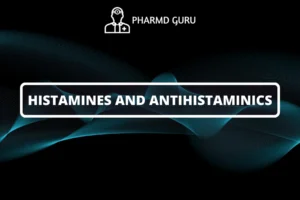OXYTOCIN AND OTHER STIMULANTS AND RELAXANTS
Hormones and hormone antagonists play a crucial role in regulating various physiological processes in the body. In this article, we will explore the pharmacology of oxytocin and other stimulants and relaxants, focusing on their mechanisms of action, therapeutic applications, and considerations for use.
SCROLL DOWN TO THE BOTTOM OF THIS PAGE FOR ACTUAL NOTES.
Oxytocin
Oxytocin is a hormone produced in the hypothalamus and released by the posterior pituitary gland. It plays a vital role in reproductive functions, social bonding, and lactation. Oxytocin acts as a stimulant and relaxant in different contexts.
Mechanism of Action
Oxytocin binds to specific receptors in various target tissues, including the uterus and mammary glands. This binding activates intracellular signaling pathways, leading to smooth muscle contraction in the uterus and milk ejection in the mammary glands.
Therapeutic Applications
- Labor Induction and Augmentation: Oxytocin is commonly used during labor to induce or augment contractions. It helps initiate or strengthen uterine contractions, promoting progress during childbirth.
- Postpartum Hemorrhage: Oxytocin can be administered to prevent or treat postpartum hemorrhage, a potentially life-threatening condition. By promoting uterine contraction, oxytocin helps reduce bleeding after delivery.
- Breastfeeding Support: Oxytocin plays a role in milk ejection during breastfeeding. In cases of insufficient milk production or difficulty with breastfeeding, oxytocin administration may be considered to facilitate milk release.
Other Stimulants and Relaxants
Apart from oxytocin, various other hormones and hormone antagonists act as stimulants and relaxants in different physiological processes. Here are a few examples:
- Adrenaline (Epinephrine): Adrenaline is a hormone that acts as a stimulant, particularly in the context of the sympathetic nervous system. It increases heart rate, blood pressure, and respiratory rate, preparing the body for a “fight or flight” response.
- Beta-2 Adrenergic Agonists: These medications stimulate beta-2 adrenergic receptors in the smooth muscles of the airways, leading to bronchodilation. They are commonly used in the treatment of asthma and chronic obstructive pulmonary disease (COPD).
- Calcium Channel Blockers: Calcium channel blockers act as relaxants by inhibiting the influx of calcium ions into smooth muscle cells. This results in vasodilation, which can lower blood pressure and reduce the workload on the heart.
Considerations for Use
When using hormones and hormone antagonists as stimulants or relaxants, several factors should be considered:
- Dosage and Administration: The dosage and route of administration of these medications should be carefully determined based on the specific indication and individual patient characteristics. Healthcare professionals should provide clear instructions to ensure safe and effective use.
- Monitoring and Side Effects: Regular monitoring of the patient’s response and potential side effects is important. For example, oxytocin administration during labor requires continuous monitoring of uterine contractions, fetal heart rate, and maternal blood pressure.
- Individual Variation: Each individual may respond differently to hormone-based stimulants or relaxants. Factors such as age, underlying health conditions, and concomitant medications should be considered when determining the appropriate treatment approach.
ACTUAL NOTES:




